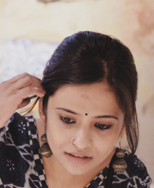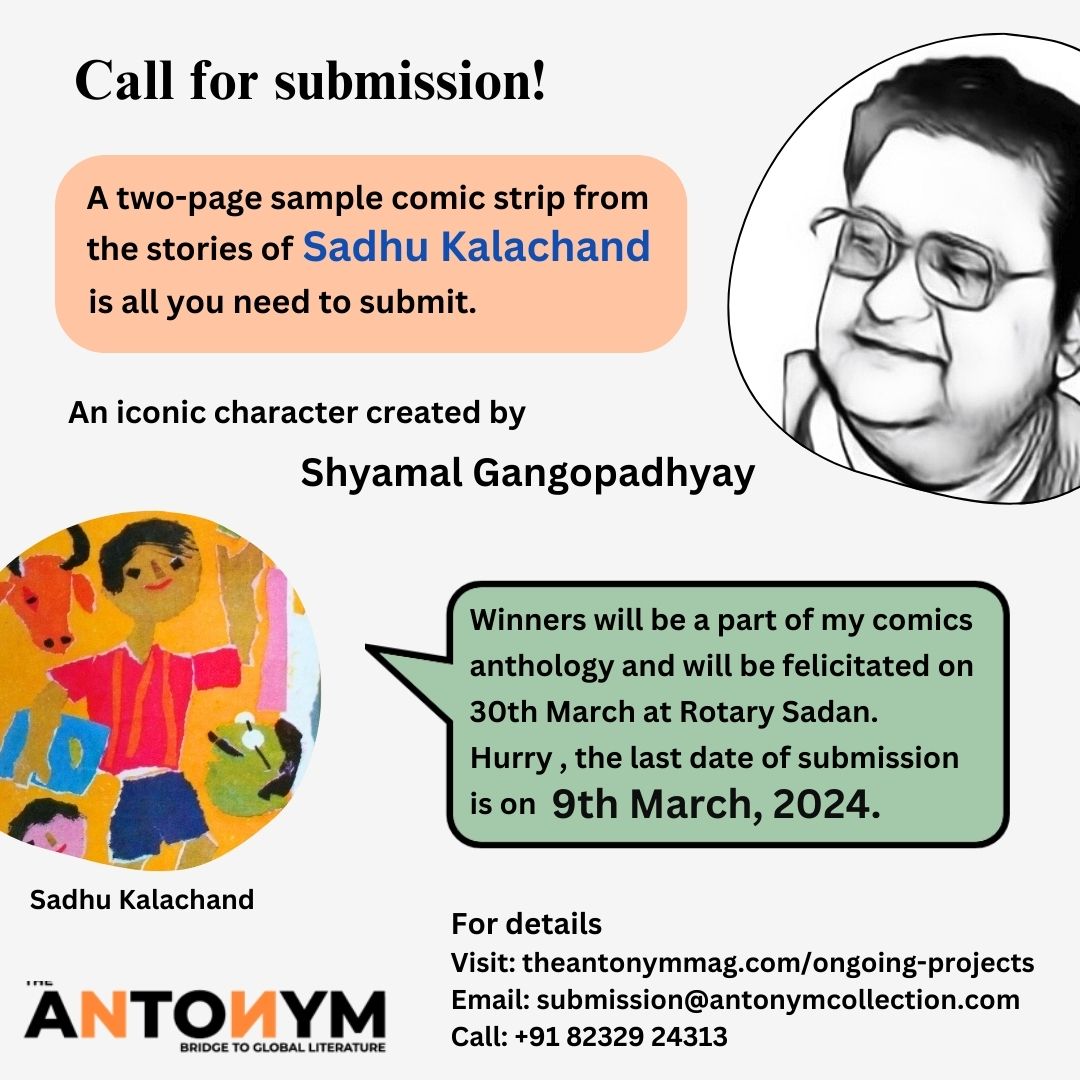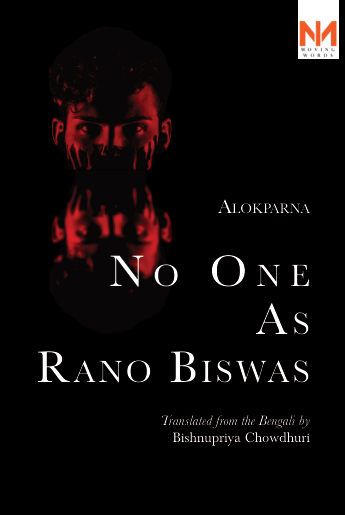Of the several stories, poetry, dramas, and academic journals that I read as part of the curriculum of Comparative Literature at Jadavpur University, there have been many that have left me spellbound—some by their sheer linguistic and formal brilliance and some by the vigor of narrative. One such story that etched the deepest wound in my mind—and I must mention here that such wounds are pleasurable for a reader of literature and feminism—was Mahasweta Devi’s Draupadi, originally published in 1978, and translated into English by Gayatri Chakravorty Spivak, as part of an anthology titled Breast Stories (published in 1997). The plot drew me, but I could almost feel the absence that any act of translation gives birth to. These are subtexts, those little spaces between the lines, that only become apparent to a native speaker of the source language. As the strength of the plot pulled me in, I decided that I must read this story in its original.
Reading the original—a new horizon opened up. The space of translation, even though it cannot absolutely replace the native language, renders a new dialogue based on a shared agenda between the writer and the translator. That shared agenda, in this case, is no doubt feminism. Devi’s feminist rage finds expression in her linguistic mastery and Spivak makes up for whatever is lost in her translation through a brilliantly penned Translator’s Foreword to the story.
Spivak, the self-admittedly feminist translator, has written in her essay The Politics Of Translation (2000):
“My relationship with [Mahasweta] Devi is easygoing. I am able to say to her: I surrender to you in your writing, not you as intending subject. There, in friendship, is another kind of surrender. Surrendering to the text in this way means, most of the time, being literal.”
In this surrender which Spivak calls the literalist surrender, lies the shared identity of a ‘woman’ between the writer and the translator. But before I proceed further, let me clarify my definition of a ‘woman’ which refers to a poststructuralist understanding of a universal oppressed category, the second sex for Simone de Beauvoir, and what Hélène Cixous means when she writes in her essay The Laugh Of The Medusa in 1976:
“I’m speaking of woman in her inevitable struggle against conventional man and of a universal woman subject who must bring women to their senses and to their meaning in history…”
Yes, the identity of a woman becomes the basis for the project of translation when the protagonist, Draupadi (or Dopdi in the Santali) challenges the patriarchal nation-state with her naked, raped body. It appears as if she sabotages the rapists and emasculates her oppressors as she holds her wounded, bruised, and bloody body, with two mangled breasts and a bleeding vagina bare. This is the epitome of the portrayal of reactive violence which is the central theme of the story. This act of challenging patriarchy with one’s mutilated raped body—is the focal image that forms the basis of the shared feminist agenda between Devi and Spivak. The woman’s body, which is often recognized as the site of patriarchal oppression, becomes a powerful symbol of resistance.
This explicit portrayal of reactive violence, where the woman’s body becomes both the site of oppression and resistance, finds a stronger voice in Devi’s Bengali as she makes Draupadi speak in the Santali dialect. It is important to understand that Devi’s Draupadi is not just a ‘woman’. Her identity cuts across various marginalized communities—a tribal, an untouchable, and a revolutionary of the Naxalite peasant’s movement in pre-partition Bengal (which gained momentum post-1960s). Hence, Draupadi’s Santali dialect is of utter significance because it tells the reader that she is not just a ‘woman’, but a woman who belongs to several marginalized and oppressed communities. And since she is subjected to the highest degree of abuse, her body puts up the strongest symbol of resistance.
Although Spivak explicates the context in great detail in her Translator’s Foreword, the Santali dialect is truly lost in her translation. But Spivak is aware of that. Hence, she makes the readers aware of who she is translating for. In the Translator’s Foreword, she writes that she is as drawn by the protagonist as the anti-protagonist of the story—Senanayak. She justifies herself by writing:
“Because in Senanayak I find the closest approximation to the First World scholar in search of the Third World…”
It is the Senanayaks, the scholars who look at history and literature through an imperialist and colonial lens, who are the target readers of Spivak’s translation. Hence, she translates into English. Therefore, one must overlook what is lost in her translation, because in this instance, one realizes how the language of the colonizer could be a means to decolonize minds. Simply by representing or re-writing (as a means of translation) fictionalized history that the organs of power try to silence.
Spivak’s translation, I believe, is also meant for all feminists in global academia. In The Politics Of Translation, Spivak writes:
“The task of the feminist translator is to consider language as a clue to the workings of gendered agency.”
This agency of the woman, specifically this re-claimed agency of a woman’s body, is the shared agenda of feminism between Spivak and Devi. It is precisely this conversation where the literalist surrender in the process of translation takes place. As Spivak explains in the Translator’s Foreword, the title Draupadi is both a “palimpsest and a contradiction” to Mahabharata’s Draupadi. In a way, where Mahabharata’s Draupadi is clothed while her husbands watch her being unclothed, Devi’s Draupadi challenges her rapists to clothe her. In her fierce Santali dialect, she emasculates all her rapists, challenging them to clothe her, and finally, she says that none of them are men, hence she needs no shame to clothe her.
It is incredible how Devi uses the moon as a metaphor for both beauty and violence. The moon keeps peeking through the narrative, sometimes representing beauty in violence. Spivak tries to capture all such imageries, trying to impeccably hold on to the literariness of Devi’s narrative. But sometimes, certain allusions are lost. Devi’s narrative is juxtaposed with English terms, especially when Senanayak and the army speak, as the language of war was a colonized tongue. Spivak retains those terms, albeit in italicized English to indicate that they were used in their English forms in Devi’s story.
All in all, Devi’s feminist vision in Draupadi is amplified in Spivak’s translation of the story. It is through such translations that a history of the oppression of a ‘woman’ body finds its place in the global cosmopolitan feminist scholars. Such a narrative where a woman’s raped body challenges patriarchy and the masculine state, where rape is still a weapon of war and violence, finds resonance in a pool of feminist scholars who are grappling against the oppressive systems that cage the ‘woman’, and its body. It is perhaps an echo of Cixous’ words in 1976:
“Woman must write her self: must write about women and bring women to writing, from which they have been driven away as violently as from their bodies—for the same reasons, by the same law, with the same fatal goal. Woman must put herself into the text—as into the world and into history—by her own movement.”
At The Antonym, we believe that writing is an important tool for women to voice their experiences of identity, sexuality, marriage, love, family, and life. Our magazine is taking a measured look at the Bengali women who have contributed to contemporary Bengali literature. They are all borne out of different life experiences and have created a distinct storytelling style that not only differentiates them from men writers but also from women. Their distinct approaches have made us believe that we could bring a new focus on Bengali women writers and explore and expand our scope in the form of translating their contributions to Bengali literature. To read about the different Bengali women writers that we have translated, please visit the following page of The Antonym magazine:
Also, read twenty micro-poems and two other poems, self-translated from Greek by Katerina Agyioti, and published in The Antonym:
Follow The Antonym’s Facebook page and Instagram account for more content and exciting updates.































This piece is well thought and equally thought provoking.
Thank you so much!
This helps a lot!
Noise